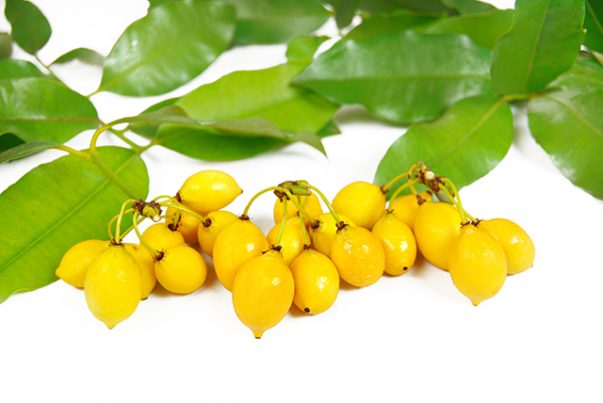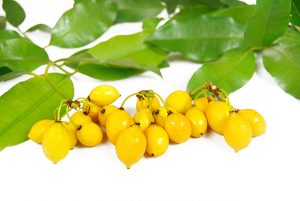
Bacupari – sources, health benefits, nutrients, uses and constituents at NaturalPedia.com
Tuesday, August 15, 2017 by Frances Bloomfield
http://www.naturalpedia.com/bacupari-sources-health-benefits-nutrients-uses-and-constituents-at-naturalpedia-com.html

The bacupari (Garcinia gardneriana) is a small, yellow to orange, tropical fruit native to the Amazon regions of South America. These sweet-tasting, pleasant-smelling fruits are a popular food within their native range of Brazil, Peru, Argentina, and Paraguay. Beyond their culinary uses, a fair amount of research by Brazilian scientists has been conducted on the possible medicinal values of bacupari. Although these have yet to be fully confirmed, there’s no denying the fact that bacupari is a beneficial, albeit somewhat difficult to come by, fruit, as is evidenced by their use in traditional medicine.

List of known nutrients
As a fruit, bacupari is low in fat and calories yet loaded with a variety of other beneficial nutrients. These include:
- Antioxidants
- Calcium
- Fiber
- Phosphorus
- Potassium
- Protein
- Vitamin B2 (Riboflavin)
- Vitamin B6 (Pyridoxine)
- Vitamin C
The most abundant nutrient in bacupari is potassium, a mineral that plays many important roles in maintaining a healthy body. In addition to preventing muscle cramps, potassium ensures that the nerves and muscles continue to function properly.
A single serving of bacupari can deliver 10.3 milligrams of vitamin C; the recommended dietary intake of this vitamin is at least 65 mg, so consuming bacupari can contribute towards meeting this nutritional requirement.
Note: like all fruits, bacupari is relatively high in sugar and should be consumed in moderation.
Medicinal uses for bacupari
The nutritional and medicinal constituents of bacupari have imbued it with a good range of therapeutic qualities, most notably the ability to normalize imbalances in the body.
Traditionally, bacupari has served as an antiphlogistic or anti-inflammatory agent. Even the leaves of the bacupari tree have been found to contain anti-inflammatory properties, making this plant a good choice for reducing inflammation.
Another traditional use for bacupari lies in the yellow resin, which has been used as a folk remedy for treating external wounds.
Bacupari seeds, leaves, and bark are said to provide relief from skin-related disorders.
As a garcinia fruit, bacupari is believed to be a good weight loss aid thanks to its fat-neutralizing qualities, so combining bacupari with a healthy diet and active lifestyle can help combat obesity.
Body systems supported by bacupari
The presence of antioxidants and vitamin C, itself a vitamin with antioxidant properties, means that bacupari can aid in the detoxification process and strengthen the immune system.
The regulatory qualities of bacupari are such that consuming it is said to correct hormonal imbalances.
Ways to use bacupari
Bacupari can be consumed raw, though the taste is so palatable that children will often eat this fruit before it has fully ripened. Bacupari picked and eaten early has a slightly sour flavor. When ripe, bacupari has been described as having a somewhat acidic and tart, largely sweet flavor similar to that of custard.
Bacupari pulp can be used to create jams and desserts.
The lemony-tasting aril is edible as well, and will add a touch of sourness to cooked dishes and teas.
Note: consuming a large amount of bacupari has led to some individuals experiencing mild discomfort, so it’s best to eat this fruit in moderation.
Moreover, bacupari is not readily available outside of South America mostly due to its short harvesting season. Fortunately, the bacupari plant is adaptable and can easily grow in tropical or temperate climates, meaning it can be grown and cultivated in one’s own backyard.
Where to learn more
Summary
The bacupari is a relatively unknown but beneficial fruit that makes a good addition to most diets. Bacupari can remedy inflammation and treat external skin wounds, as well as boost the immune system and balance hormone levels. Mild discomfort has been reported from eating too much bacupari, so infrequently eating modest amounts of this fruit is recommended.
Sources include:
FruitsInfo.com
HealthyBenefits.info
OnlyFoods.net
BerryFruit.info
Tagged Under: Tags: Bacupari





